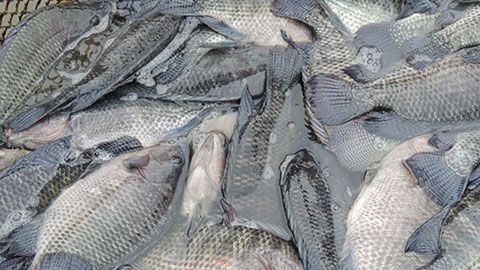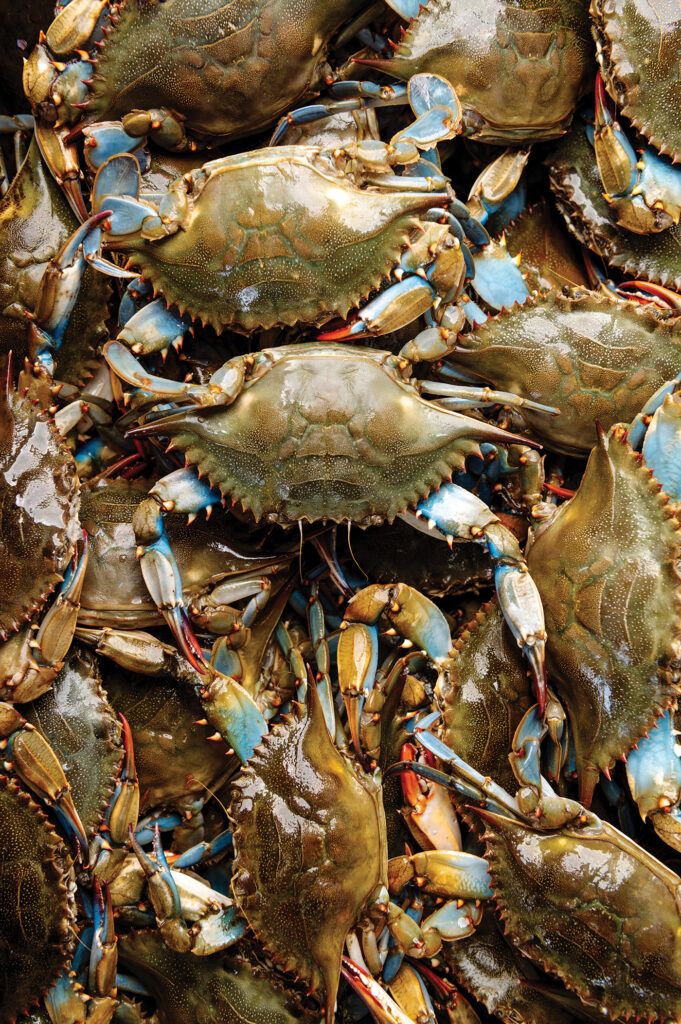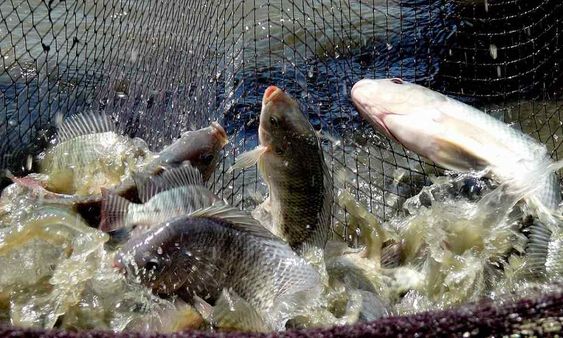Tilapia Management: A Comprehensive Guide to Effective Farming Practices and Strategies
Tilapia Management is a popular fish species widely cultivated across the globe due to its adaptability, rapid growth, and high market value. Originally native to Africa and the Middle East, tilapia farming has expanded worldwide, becoming a crucial part of aquaculture. Effective tilapia management is vital to ensure the sustainability of farming practices, optimize production, and enhance the health and growth of the fish.
Contents
Benefits of Tilapia Farming
Tilapia farming presents numerous advantages, making it a favored choice for aquaculture. Some key benefits include:
- Rapid Growth: Tilapia farming offers a range of significant benefits, making it a popular choice for aquaculture practitioners worldwide. One of the primary advantages is rapid growth. Tilapia grow faster than many other fish species, often reaching market size in as little as six months under optimal conditions. This accelerated growth rate allows farmers to cycle through production more quickly, resulting in higher yields over a shorter period.
- High Reproductive Rate: Another major benefit is tilapia’s high reproductive rate. These fish breed prolifically, ensuring a steady supply of stock for farmers. Their ability to reproduce in controlled environments makes tilapia farming highly efficient, reducing the need for constant restocking and lowering operational costs.
- Adaptability:Tilapia are also known for their adaptability. They can thrive in a variety of water conditions, including different temperatures and levels of salinity. This flexibility allows tilapia to be farmed in a wide range of environments, from freshwater ponds to brackish water systems, making it accessible to farmers in diverse regions. Additionally, tilapia are resilient to many common fish diseases, which reduces the risk of loss and the need for extensive veterinary care.tions, including diverse water temperatures and qualities. They are also hardy against many common diseases.
- Nutritional Value: tilapia are highly nutritious, providing a rich source of protein while being low in fat. They are also packed with essential vitamins and minerals, such as vitamin D, phosphorus, and selenium, making them a healthy option for consumers.
- Economic Viability: tilapia farming is recognized for its economic viability. The combination of fast growth, high market demand, and relatively low maintenance costs makes tilapia farming a profitable venture for both small-scale and commercial farmers. These factors, combined with its global appeal, ensure tilapia remains a leading choice in aquaculture.

Goals of Tilapia Management
Effective tilapia management aims to achieve several key goals:
- Optimizing Growth Rates: One of the primary objectives is optimizing growth rates. This involves ensuring that tilapia grow efficiently and reach market size as quickly as possible. By providing the right conditions, such as proper nutrition, optimal water quality, and adequate space, farmers can significantly enhance the growth rates of their tilapia stock, allowing for faster production cycles and higher yields.
- Maintaining Water Quality: Another key goal is maintaining water quality. Tilapia thrive in specific environmental conditions, and managing water quality is essential for their health and growth. This includes monitoring parameters such as oxygen levels, pH, temperature, and ammonia concentration. Poor water quality can lead to stress, disease, and reduced growth rates, so regular monitoring and adjustments are critical to maintaining a healthy environment.
- Disease Control: Disease control is another important aspect of tilapia management. Farmers must take preventive measures to avoid the spread of diseases that could harm their stock. This includes implementing biosecurity protocols, monitoring fish for early signs of illness, and using vaccines or treatments when necessary. Healthy fish are more productive, leading to better yields and reduced losses.
- Maximizing Feed Efficiency: Maximizing feed efficiency is also a central goal. By using high-quality feed and managing feeding schedules, farmers can ensure that tilapia receive the nutrients they need for optimal growth while minimizing waste. Efficient feeding not only promotes healthy fish but also reduces costs associated with excess feed and water contamination from uneaten food.
- Sustainable Practices: sustainable practices are increasingly important in tilapia management. Farmers are encouraged to adopt methods that minimize environmental impact, such as using renewable resources, reducing water usage, and managing waste responsibly.
- Economic Profitability: economic profitability is the ultimate goal of tilapia management. By focusing on efficient production, cost control, and sustainability, farmers can enhance profitability and ensure the long-term success of their operations.

Tilapia Management Strategies
- Site Selection and Pond DesignLocation: Choose a site with good water availability, suitable climate, and minimal risk of contamination. The water source should be clean and reliable.Pond Design: Design ponds with proper depth, slope, and drainage to facilitate water management and prevent stagnation. Ponds should have adequate aeration systems to ensure sufficient oxygen levels for tilapia.
- Water Quality ManagementTemperature: Tilapia thrive in water temperatures between 25°C and 30°C (77°F to 86°F). Regularly monitor and maintain water temperature within this range.Oxygen Levels: Ensure that dissolved oxygen levels are consistently above 5 mg/L. Use aeration devices such as air stones or paddle wheels to maintain oxygen levels.
pH Levels: Tilapia prefer a pH range of 6.5 to 8.5. Regularly test and adjust pH levels as needed.
Ammonia and Nitrite Levels: Monitor ammonia and nitrite concentrations, keeping them as low as possible. Perform regular water changes and use biological filtration to manage these levels.
Turbidity: Keep water turbidity low to ensure adequate light penetration and promote healthy algae growth, which can contribute to the fish’s diet.
- Stocking and FeedingStocking Density: Stock tilapia at appropriate densities to avoid overcrowding, which can lead to stress, poor growth, and increased disease risk. A general guideline is 1 to 2 fish per square meter.Feed Management: Use high-quality, nutritionally balanced feed to promote optimal growth. Feed tilapia multiple times a day, adjusting the amount based on their growth stage and appetite.
Feeding Practices: Avoid overfeeding, which can lead to water quality issues. Monitor feed consumption and adjust feeding rates as needed.
- Health and Disease ManagementRegular Monitoring: Regularly inspect tilapia for signs of illness or stress. Look for abnormalities in behavior, appearance, and feeding patterns.Disease Prevention: Implement preventive measures such as maintaining good water quality, avoiding overcrowding, and using probiotics to enhance immune system function.
Treatment: If diseases are detected, consult with a veterinarian or aquaculture specialist to diagnose and treat the issue promptly. Use medications as directed and follow withdrawal periods to ensure fish safety.
- Harvesting and MarketingHarvest Timing: Harvest tilapia when they reach the desired size and weight. Regularly monitor their growth to determine the optimal harvesting time.Processing: Ensure proper handling and processing of harvested tilapia to maintain quality and minimize spoilage. Follow food safety standards and regulations.
Marketing: Develop effective marketing strategies to reach potential buyers. Consider various channels such as local markets, supermarkets, and restaurants.
Sustainable Tilapia Management Practices
- Integrated Aquaculture: Sustainable tilapia management practices are crucial for promoting environmentally responsible and resource-efficient aquaculture. One effective approach is Integrated Aquaculture, where tilapia farming is combined with other agricultural activities, such as crop cultivation or livestock raising. This integration creates a closed-loop system, where resources are reused efficiently, reducing waste and maximizing productivity. For example, wastewater from tilapia ponds can be used to irrigate crops, while animal manure can be converted into organic fertilizer for both crops and fish ponds, enhancing sustainability.
- Water Recycling: Water Recycling is another key practice. Techniques like Recirculating Aquaculture Systems (RAS) help minimize water usage by filtering and reusing the same water within the system. This not only conserves water but also reduces the risk of pollution in surrounding water bodies, making tilapia farming more environmentally friendly.
- Waste Management: Effective Waste Management is essential for sustainable tilapia farming. Fish waste can be repurposed as compost for crops or used as feed for other animals, closing the nutrient loop and reducing the need for synthetic fertilizers. Proper disposal and treatment of waste prevent contamination of nearby ecosystems, further lowering the environmental impact.
- Energy Efficiency: Energy conservation plays a significant role in sustainable practices. Implementing Energy Efficiency measures, such as using energy-efficient pumps and aeration systems, can greatly reduce the carbon footprint of tilapia farms. Utilizing renewable energy sources like solar or wind power is another option to further enhance sustainability.
- Environmental Impact Assessment: conducting regular Environmental Impact Assessments is important for monitoring and adjusting farming operations. These assessments help farmers identify potential ecological risks and implement strategies to mitigate negative environmental effects, ensuring that tilapia farming practices are sustainable and in harmony with the environment.

Ideas for Tilapia Management Innovations
- Smart Aquaculture Technologies: Integrate smart technologies such as sensors, automation, and data analytics to monitor and manage tilapia farming operations more efficiently.
- Genetic Improvement: Invest in research and development of genetically improved tilapia strains with enhanced growth rates, disease resistance, and environmental adaptability.
- Community Engagement: Engage with local communities to promote sustainable tilapia farming practices and support local economies.
- Education and Training: Provide education and training opportunities for fish farmers to enhance their knowledge and skills in tilapia management.
- Research and Development: Continuously invest in research to discover new techniques, technologies, and best practices for tilapia management.
Implementation Tips for Tilapia Management
Invest in Technology and Innovation
Leveraging technology can enhance efficiency, improve monitoring, and optimize management practices.
- Automation: Use automated feeding and water management systems to streamline operations.
- Software Solutions: Utilize farm management software to manage records, track performance, and analyze data.
- Monitoring Systems: Implement sensors and data loggers to track water quality parameters and fish health.
Prioritize Environmental Sustainability
Adopting environmentally friendly practices helps mitigate the ecological impact of tilapia farming and ensures long-term sustainability.
- Waste Management: Implement systems for handling and recycling waste, such as composting or biogas production.
- Energy Efficiency: Use energy-efficient equipment and explore renewable energy sources.
- Water Conservation: Employ water-saving technologies and practices, such as recirculating systems and efficient filtration.
Tilapia management is a multifaceted process that requires careful planning and execution to ensure successful and sustainable aquaculture operations. By focusing on optimal growth conditions, maintaining high water quality, managing health and diseases, and implementing sustainable practices, fish farmers can achieve their goals and reap the benefits of tilapia farming.






